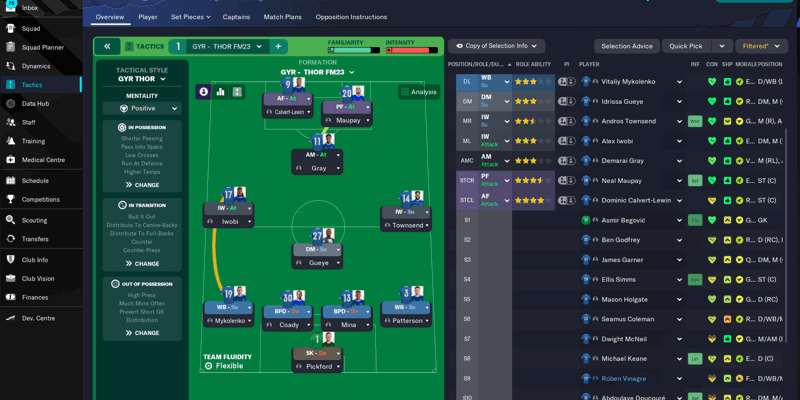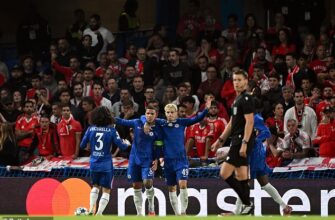In the relentlessly competitive world of European football, clubs continually wrestle with a pivotal strategic choice: do you lean on the seasoned wisdom of veterans, or do you invest in the raw energy and untapped potential of youth? Recent analysis from the CIES Football Observatory offers a compelling look at how Europe`s top leagues and elite competitions are navigating this age-old dilemma, revealing a fascinating spectrum of team-building philosophies.
Napoli: The Champions League`s Old Guard
When the UEFA Champions League anthem blares, signifying stakes that are astronomically high and pressure that is a constant, some clubs make their preference clear: experience reigns supreme. Consider Napoli, for instance. According to CIES data, the Neapolitan club fielded players aged 30 or older for a substantial 46.8% of their minutes in Europe`s premier club competition. Extend that to players over 26, and the figure dramatically rises to an astonishing 84.5%. This isn`t merely a coincidence; it`s a deliberate tactical blueprint, a testament to manager Antonio Conte`s clear reliance on proven talent capable of mastering the intricate demands of European football`s grandest stage.
“In the Champions League, where fine margins dictate destiny, Napoli appears to be placing its bets squarely on the shoulders of those who have seen it all before. Youth, it seems, can wait for another stage.”
This reliance on seasoned professionals isn`t exclusive to Napoli, though their commitment to it is particularly pronounced. Bayern Munich, another perennial contender in Europe, also shows a strong inclination towards its veterans, with players over 30 accumulating 36.0% of their Champions League minutes. In stark contrast, Paris Saint-Germain presents a fascinating counter-narrative, with a mere 3.0% of minutes played by players over 30. This suggests a squad built on younger foundations, perhaps eyeing a long-term dynasty rather than an immediate, battle-hardened readiness for the continent`s fiercest contests.
The Youth Revolution: Where Fresh Legs Lead the Charge
While some clubs pursue European glory with a veteran core, others are diligently cultivating the stars of tomorrow within their domestic ecosystems. The CIES data paints a vivid picture of this youth movement blossoming across Europe`s `big five` leagues:
- Serie A`s Youth Champion: Parma. Leading the charge in Italy, Parma boasts an average squad age of just 24.26 years. This strategy underscores a club committed to nurturing emerging talent, a potentially astute long-term investment that promises future dividends – provided, of course, they can resist the inevitable advances from bigger clubs for their rising stars.
- Premier League`s Young Vanguards: Chelsea. With an average squad age of 24.36 years, Chelsea exemplifies the trend in England`s top flight. Following substantial investment in young players, the London club is clearly placing its chips on future potential to reclaim its former glory. It`s a bold gamble, but one with the potential for exponential returns.
- La Liga`s Next Generation: Barcelona (and Real Madrid). Barcelona, with an average age of 25.22 years, slightly edges out arch-rivals Real Madrid (25.67 years) in the youth stakes. Both Spanish giants, historically celebrated for their academies, continue to expertly blend emerging talent with established superstars, albeit with a discernable lean towards younger blood.
- Ligue 1`s Youngest: Strasbourg. France’s Ligue 1 hosts the youngest squad among all major European leagues, with Strasbourg leading the pack at an average age of a remarkably fresh 21.45 years. This often reflects a league dynamic where clubs serve as crucial proving grounds for talent before players make their inevitable move to wealthier destinations.
- Bundesliga`s Energetic Core: Eintracht Frankfurt. In Germany, Eintracht Frankfurt stands out with an average squad age of 24.48 years, further cementing the Bundesliga`s well-earned reputation for high-intensity, youth-driven football, where pressing and pace are paramount.
These figures are far more than mere curiosities; they embody distinct philosophical approaches to team construction. Clubs prioritizing youth are frequently aiming to build sustainable success, cultivate valuable assets for future transfers, and implement a fast-paced, high-pressing style that younger legs are ideally suited to sustain. It`s a calculated risk, no doubt, but one that promises substantial long-term rewards if executed with precision and patience.
The Evolving Game: Strategy, Circumstance, or Both?
The CIES report vividly highlights a fundamental truth in contemporary football: there is no universal “right” way to assemble a winning team. Napoli`s unwavering focus on experienced hands for the Champions League is a calculated manoeuvre to maximize immediate success in an environment where mistakes are ruthlessly punished. Parma`s steadfast dedication to youth, conversely, signals a long-term vision, potentially driven by financial prudence, a desire to forge a unique club identity, or simply the strategic advantage of developing players from their formative years.
Ultimately, whether a club chooses to embrace the sagacity of its elders or the effervescence of its youth, the triumph of either strategy hinges on astute management, visionary coaching, and an unwavering clarity of objectives. The data merely provides a compelling snapshot of these fascinating, ongoing tactical debates that unfold on pitches across Europe, unequivocally confirming that football, much like life itself, offers a multitude of paths to victory.








